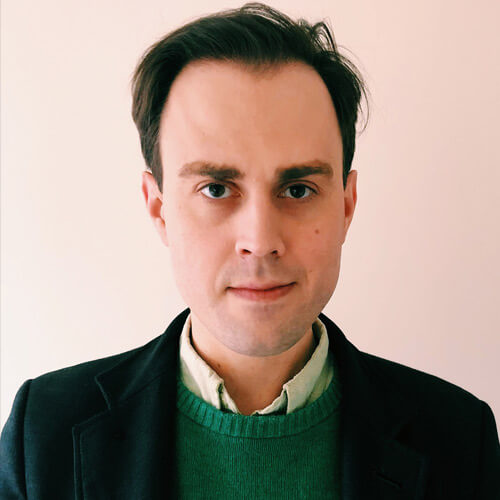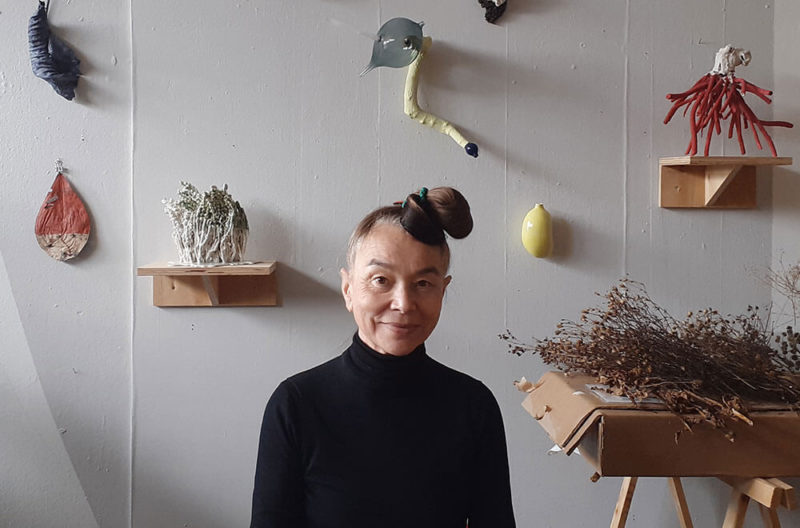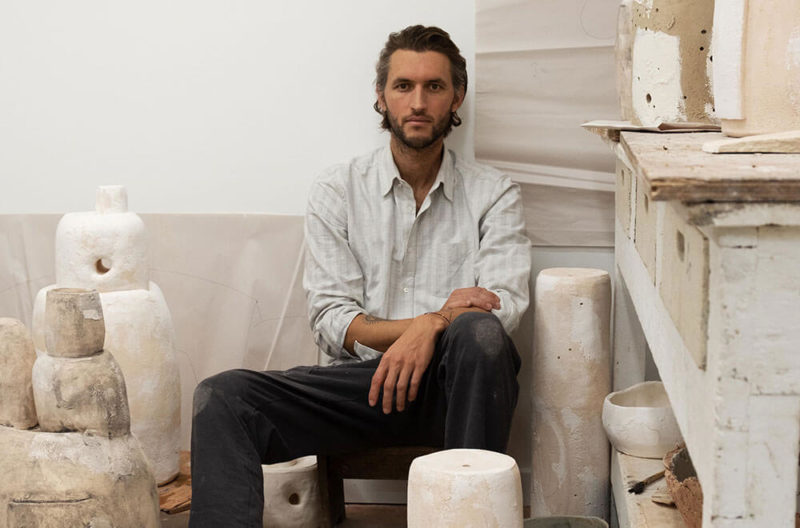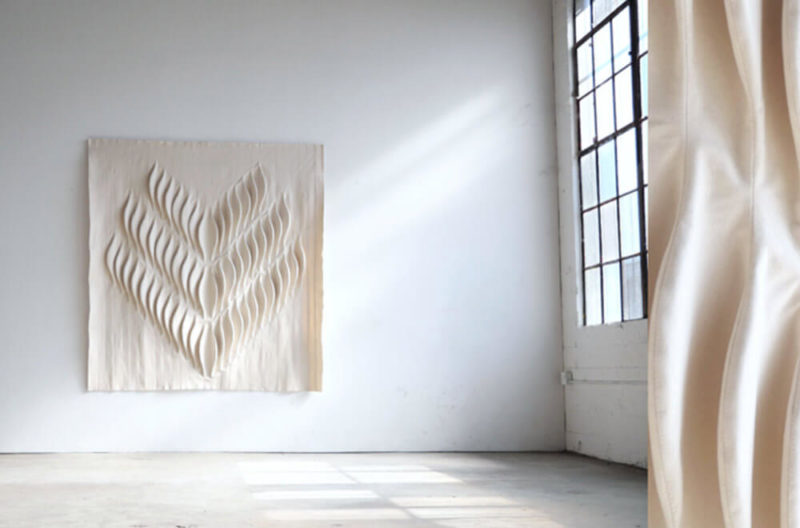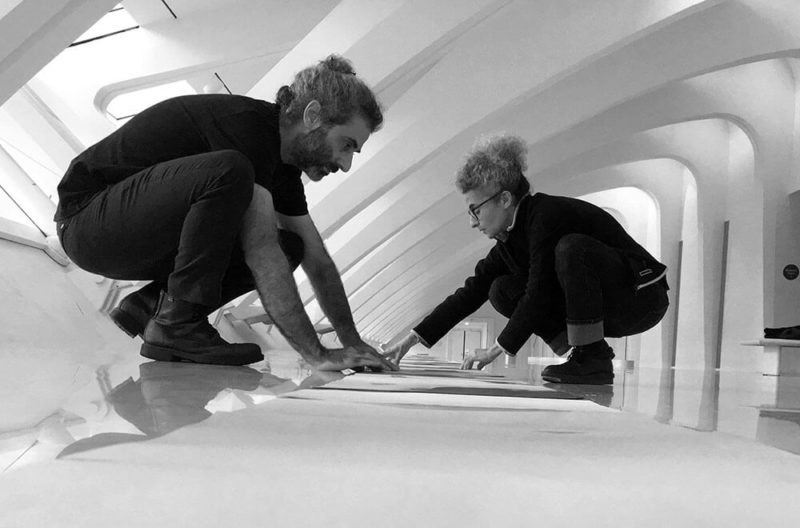Adam Silverman
The ceramicist sets up shop in a new Los Angeles workshop and launches an extensive social project addressing America’s growing socio-political divide.
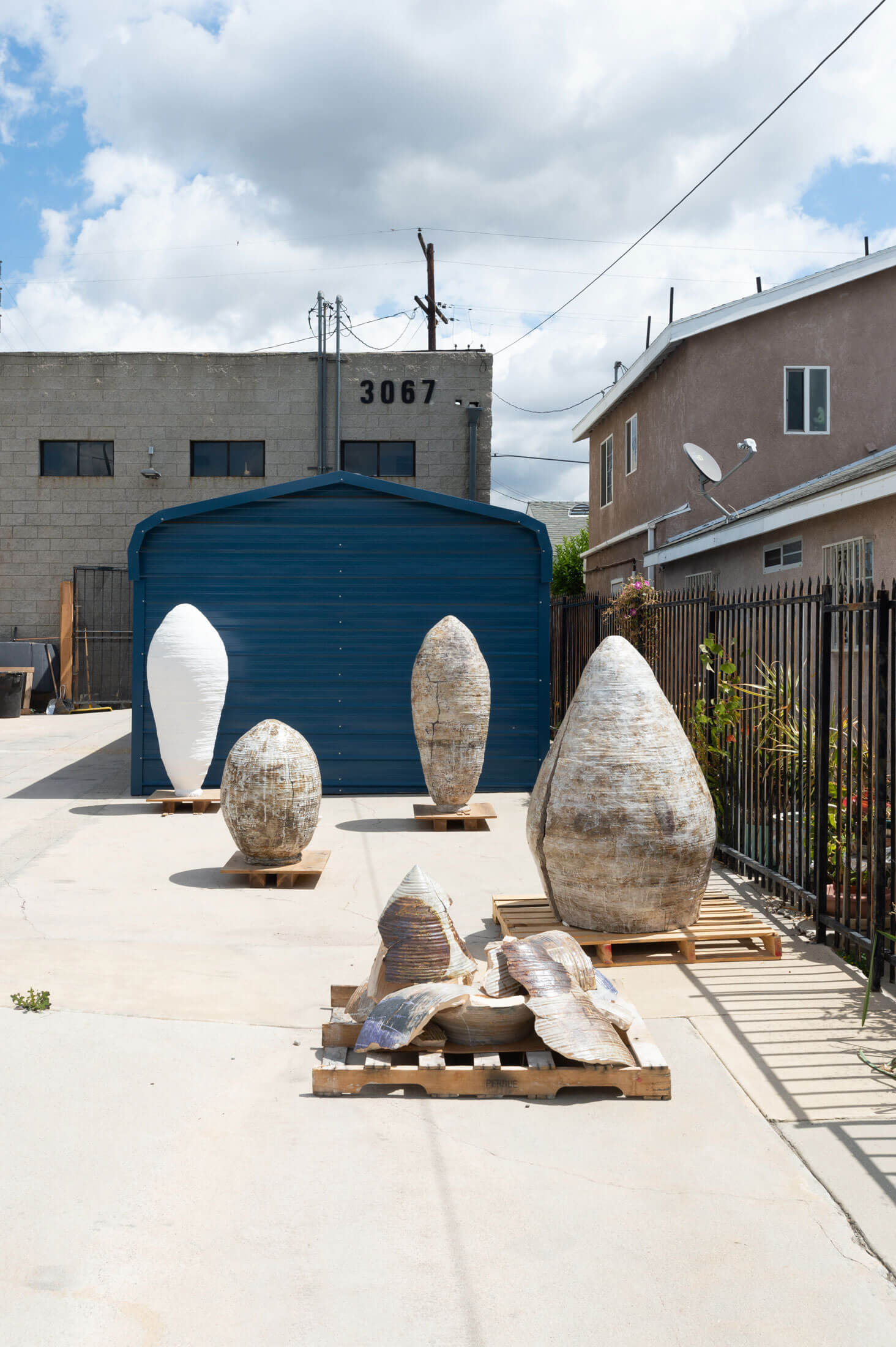
Adam Silverman’s new studio is located in Los Angeles’s burgeoning Frogtown neighbourhood
COURTESY: Adam Silverman & Friedman Benda
CLAY IS MUCH more than a material for renowned Los Angeles-based talent Adam Silverman. This medium is both figuratively and literally a vessel for the embodiment of larger concepts and the dissemination of social messages. And yet, the Rhode Island School of Design (RISD) trained architect’s affinity for ceramics stems from a visceral desire to work with his hands and a chance to get away from the intellectuality of his former discipline.
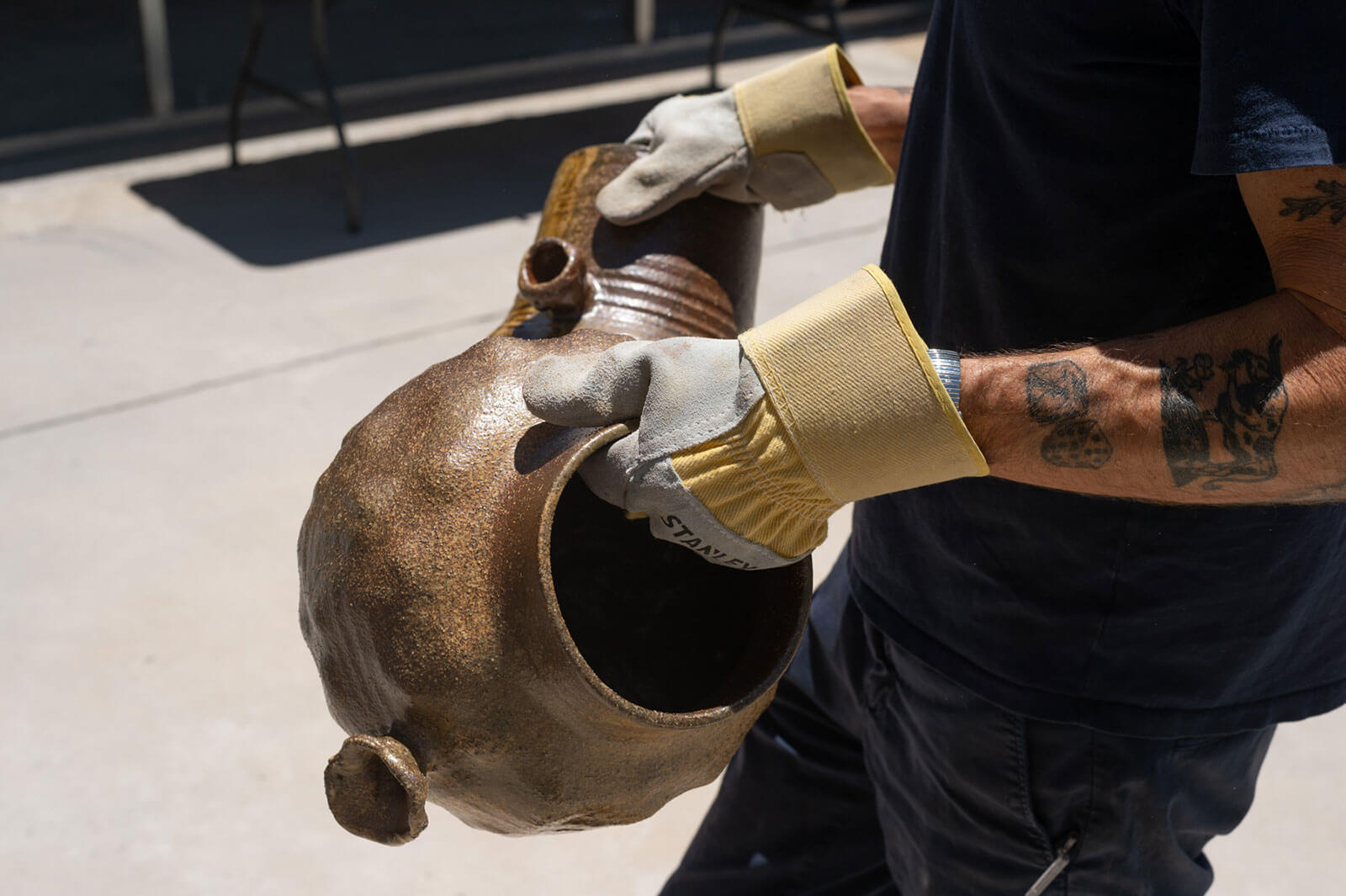
Silverman holding a fired piece of the ‘Common Ground’ project
COURTESY: Adam Silverman & Friedman Benda
This careful balance of craft and artistic expression manifests in large scale projects that implement clay in expansive, complex and multi-component projects. In 2014 he collaborated with Nader Tehrani and conceived ‘Boolean Valley’, an installation comprising 400 clay objects and presented in numerous US museums. His latest endeavour, ‘Common Ground’, takes on a similar scale as do new extra-large egg-shaped vases, created in his new indoor/outdoor Los Angeles Studio. The Design Edit contributor Adrian Madlener spoke to Silverman about these developments.
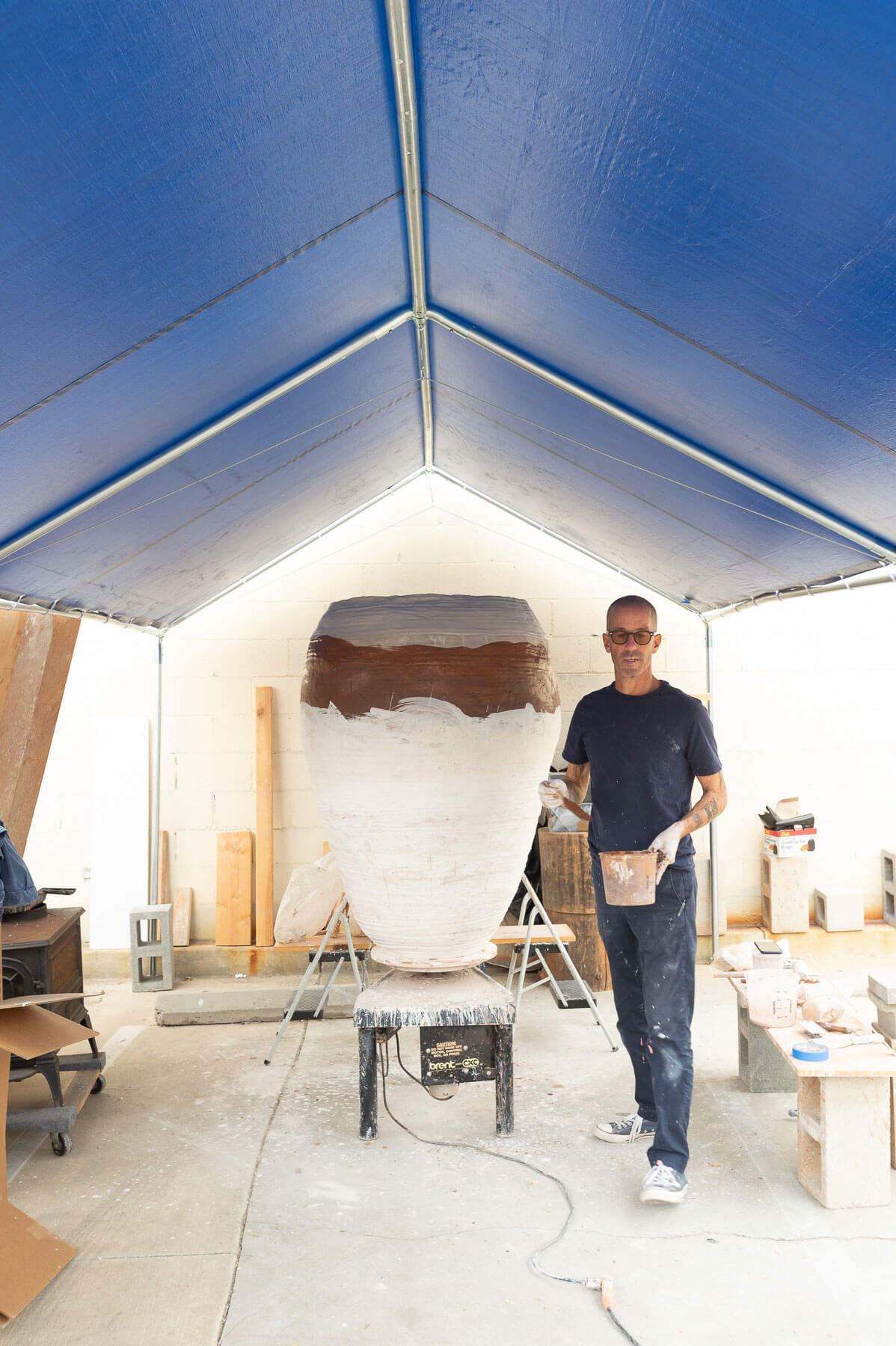
Silverman applying his painterly glazes to a large vessel developed for a commission at the US Embassy in Tegucigalpa, Honduras
COURTESY: Adam Silverman & Friedman Benda
The Design Edit (TDE): Tell us about your background and how you began working with ceramics.
Adam Silverman (AS): Though I studied architecture, I worked with clay before, after and during my time at RISD. My portfolio was mostly about ceramics. Though I ended up working for large Southern California-based firms right after school in the 1990s and early 2000s, I’ve spent the last 20 years pursuing my true passion for this medium. One of the catalysts for this shift was joining the Heath Ceramics team as its artistic director in 2009. I helped the tile company open their Los Angeles store and set up an adjacent open kitchen space, where I could do research and development.
After five successful years, I decided to branch off and begin working autonomously. I’ve continuously self-taught myself different techniques, but the core of my practice is wheel-building – even when making large pieces. I also love the firing process, working with various types of kilns and introducing different environmental factors that impact the final results. It’s all about the violent and aggressive transformation of the material that can produce beautiful outcomes.
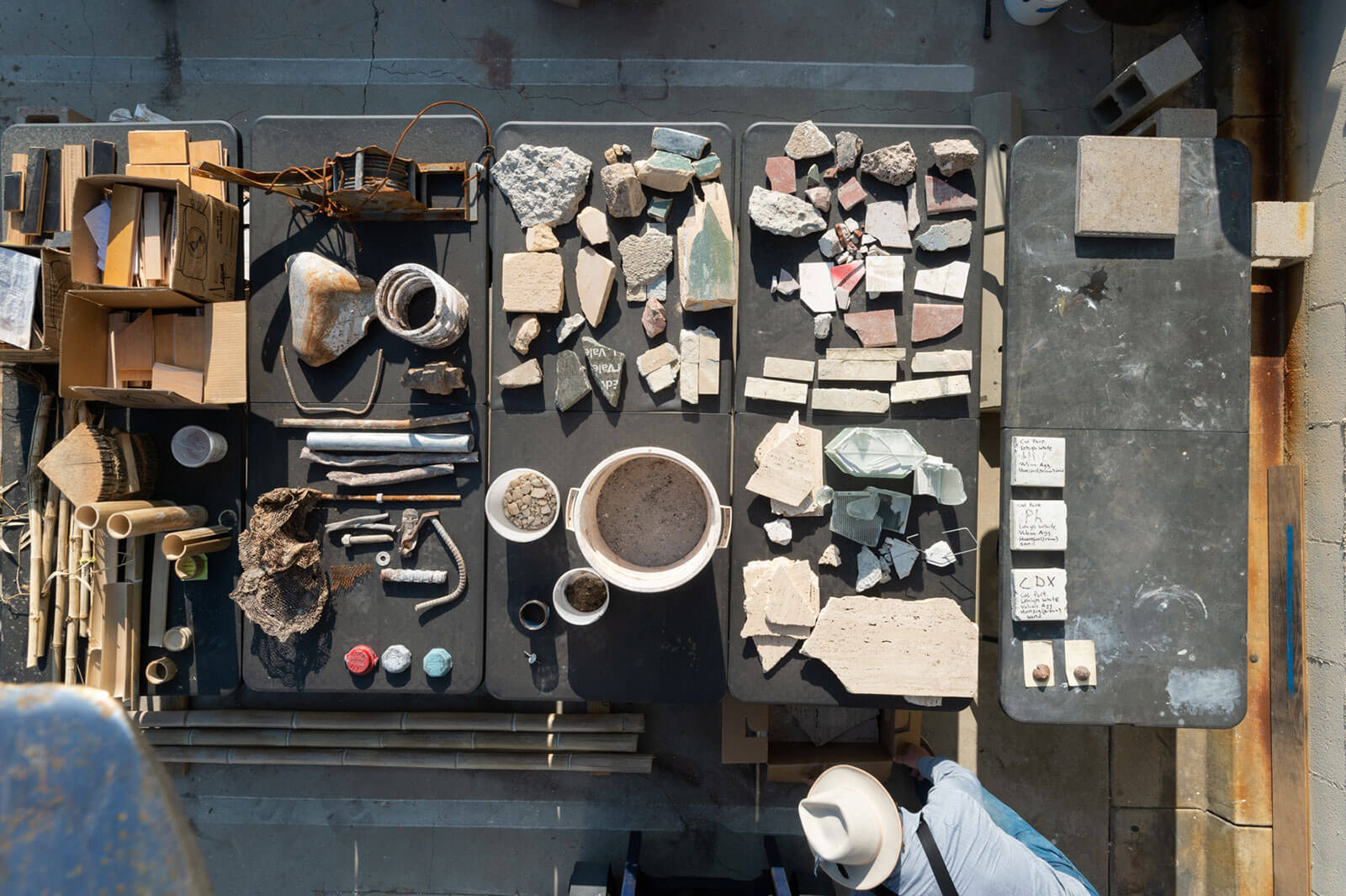
Silverman’s workstation
COURTESY: Adam Silverman & Friedman Benda
TDE: How do architecture and design subject matter come into play in your practice?
AS: People often say that they see my architecture background in the work, but for me, this connection is unconscious, if anything. I do think, however, that I still have a strong sense of geometry and an understanding of modernist principles and human proportion. Essentially working as a potter, I’m aware that what I make is functional art. It’s about distilling the tectonics and materiality of the form as means of communicating something else – not just creating decoration.
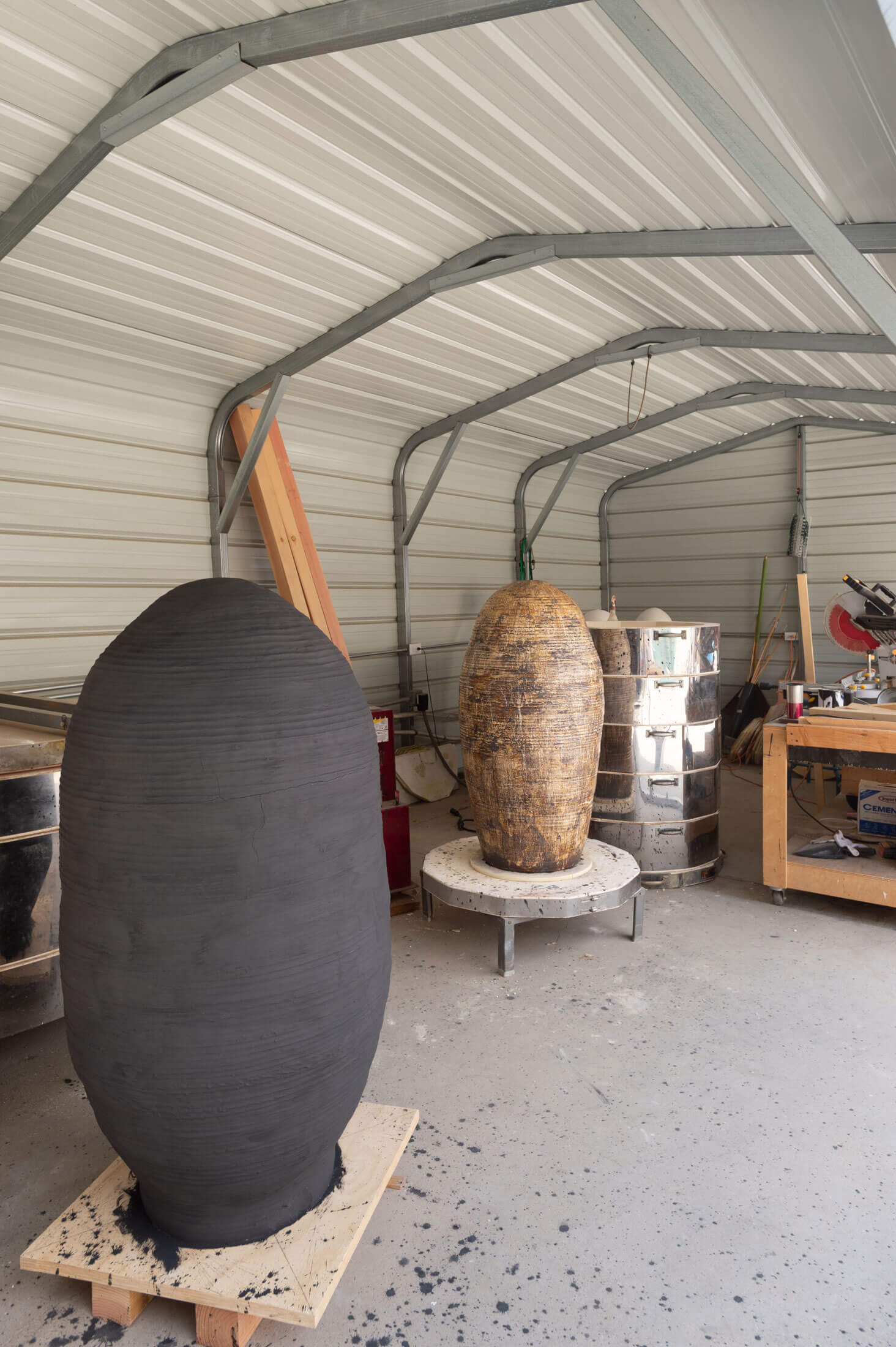
Silverman’s ability to create especially large works relies heavily on his expansive inside / outside studio
COURTESY: Adam Silverman & Friedman Benda
TDE: The use of everyday objects as subject matter often appears in your work, especially in the ‘Occupation’ installation/exhibition hosted at Friedman Benda gallery in 2018.
AS: What you could see in that show was me trying to work out the questions of disciplinary hierarchy – what’s art, what’s design, etc. – within the gallery context. The idea was that the installation could be understood on different contradictory levels that all somehow centred on the notion that objects ultimately occupy space. It contained architecture, design and hopefully art as well. ‘Occupation’ was about relationships between the different pieces, groupings and metaphors. My background is in architecture. My training is in design and art. I have no formal training in ceramics. All of my influences and references are everything but ceramics, although all I make is ceramics.
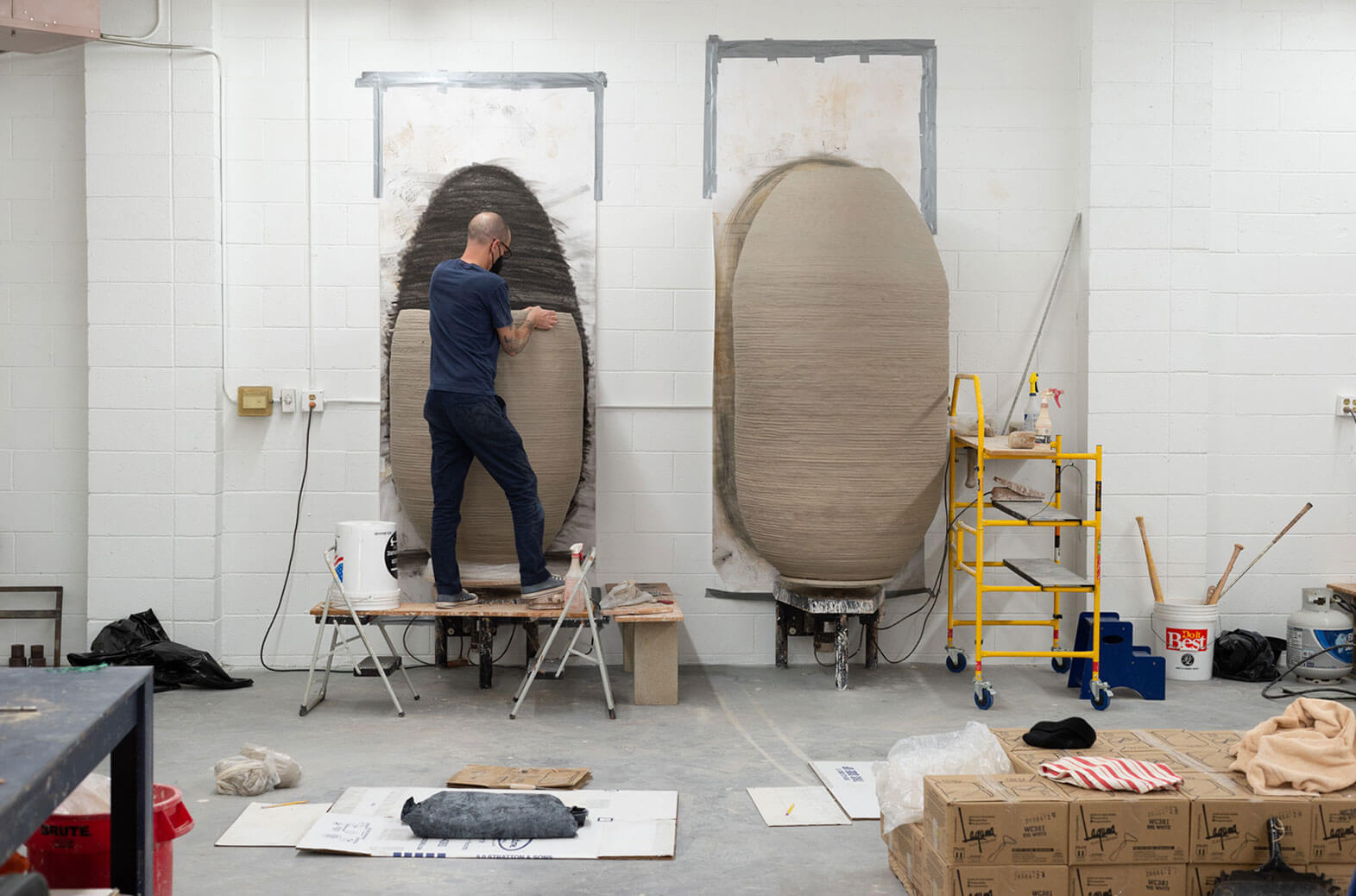
Silverman constructing large wheel-thrown vessels according to charcoal drawings
COURTESY: Adam Silverman & Friedman Benda
TDE: Your current ‘Common Ground’ project also uses ubiquitous objects like dishes, plates and pots. Tell us more about the idea behind this wide-reaching social project.
AS: ‘Common Ground’ is based on the idea of addressing the current political and cultural divisiveness within the United States, and finding a way of celebrating the commonality and universality of the shared American experience. I decided the best way to do this was to think about the idea of a meal and how different people could come together around a table to exchange ideas, communicate and find their common humanity. For me, the creation of dinnerware – using clay, water and wood ash from the country’s 56 states and territories – seems like the best way to facilitate such events. I’ve made these elements by infusing all of these sourced materials together. They can get the conversation going and the meaning of the work will follow.
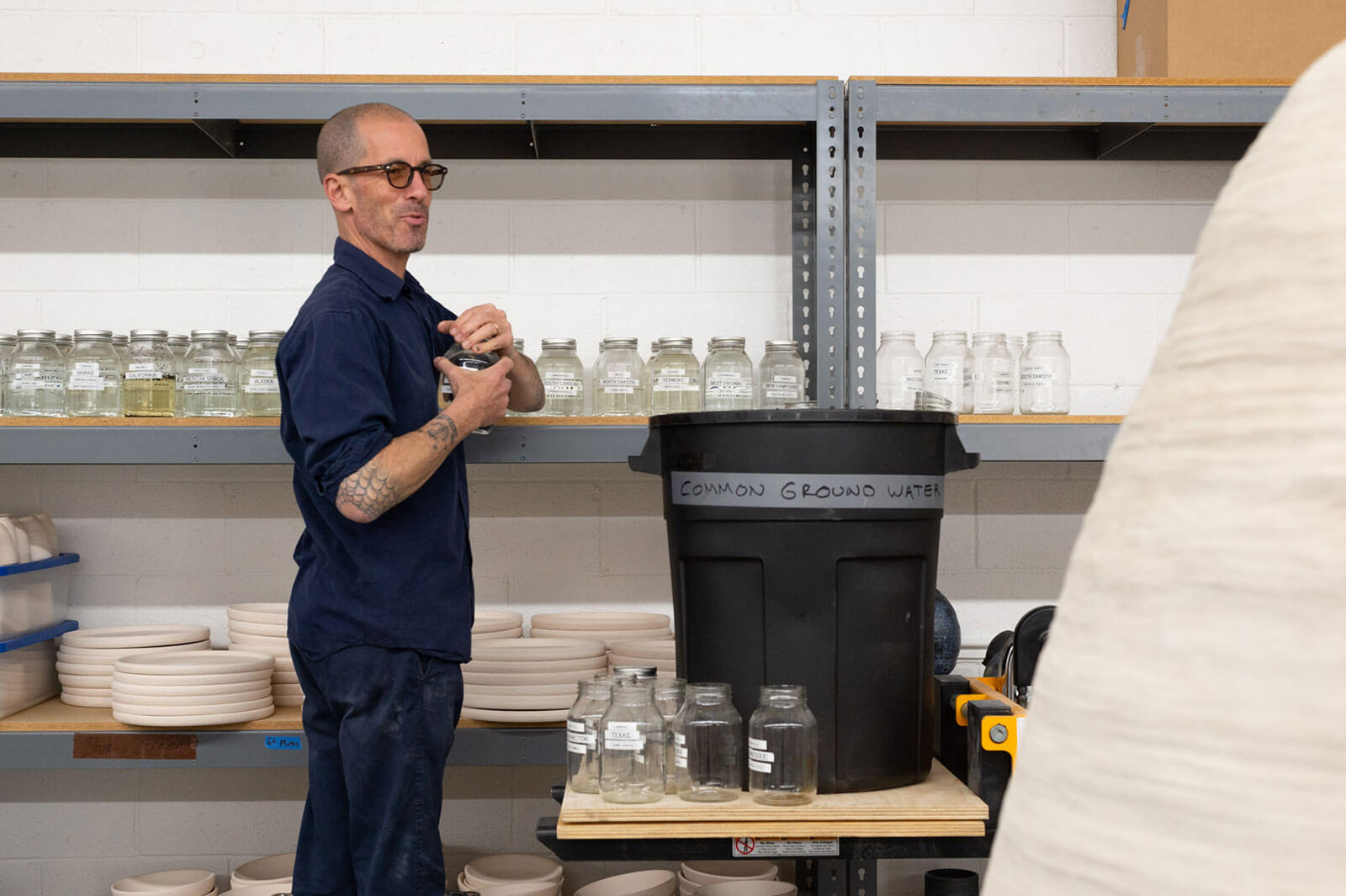
Silverman with samples of water from all 56 US territories, collected for his ongoing ‘Common Ground’ project
COURTESY: Adam Silverman & Friedman Benda
Beginning this project in fall 2019, I relied heavily on an open social media call to source these elements throughout the US and, in turn, engaged with a wide range of people who reflect different backgrounds, political views, levels of interest in the project and reasons for participating. The response grew over time and was great. My initial goal was to finish creating the 56 or so dinner placings in time for the 2020 presidential elections and host dinners throughout the country, between then and the inauguration the following January. But, of course, the pandemic slowed everything down.
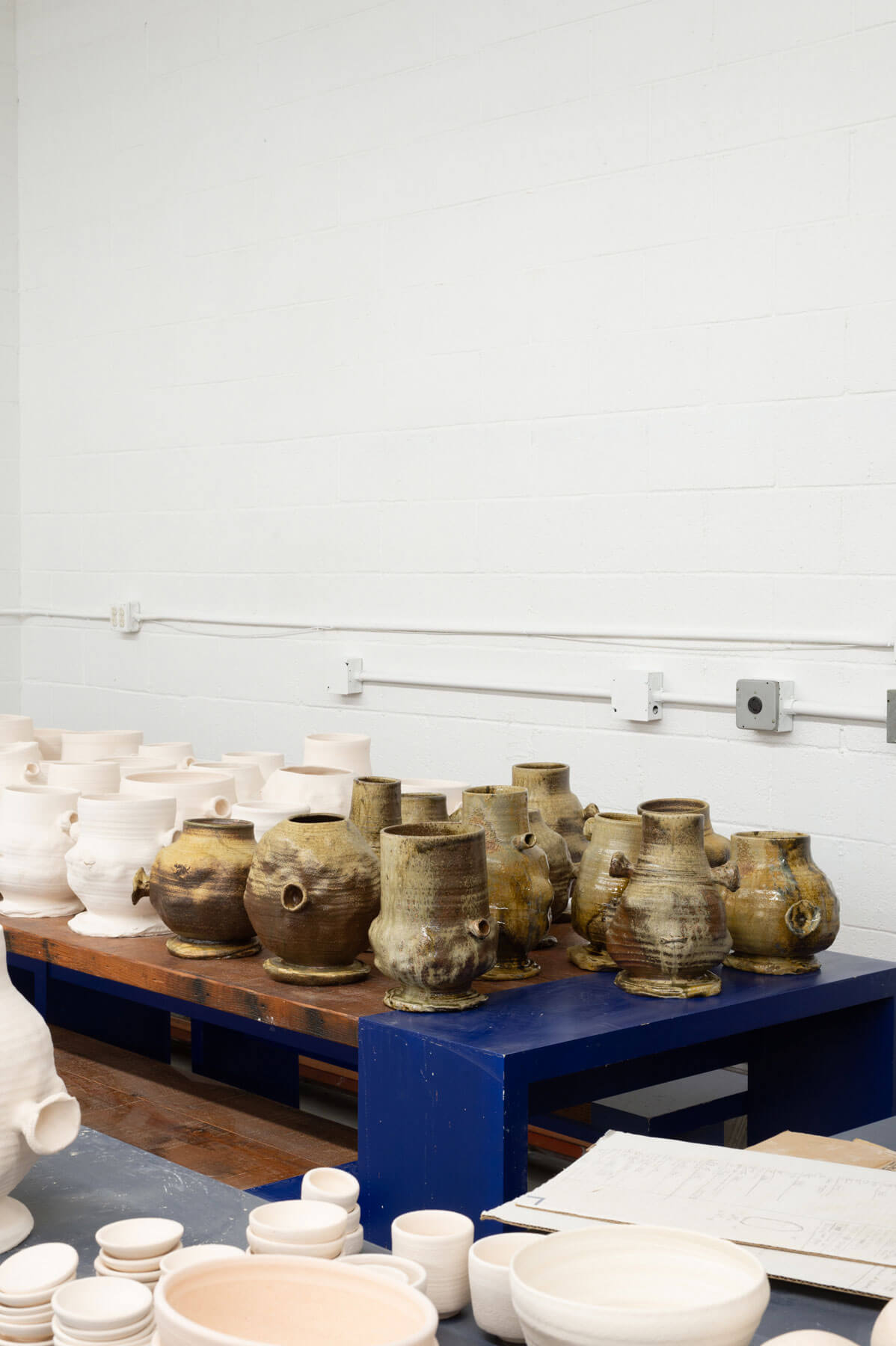
Different dinnerware and pot elements of the ‘Common Ground’ project
COURTESY: Adam Silverman & Friedman Benda
The plan now is to finish the pieces in the next few months and begin hosting dinners this fall. The extra time allowed me to take a more considered approach and look at the deep intrinsic societal issues that are not just about Trump. For instance, how did we get here and how can we fix these problems.
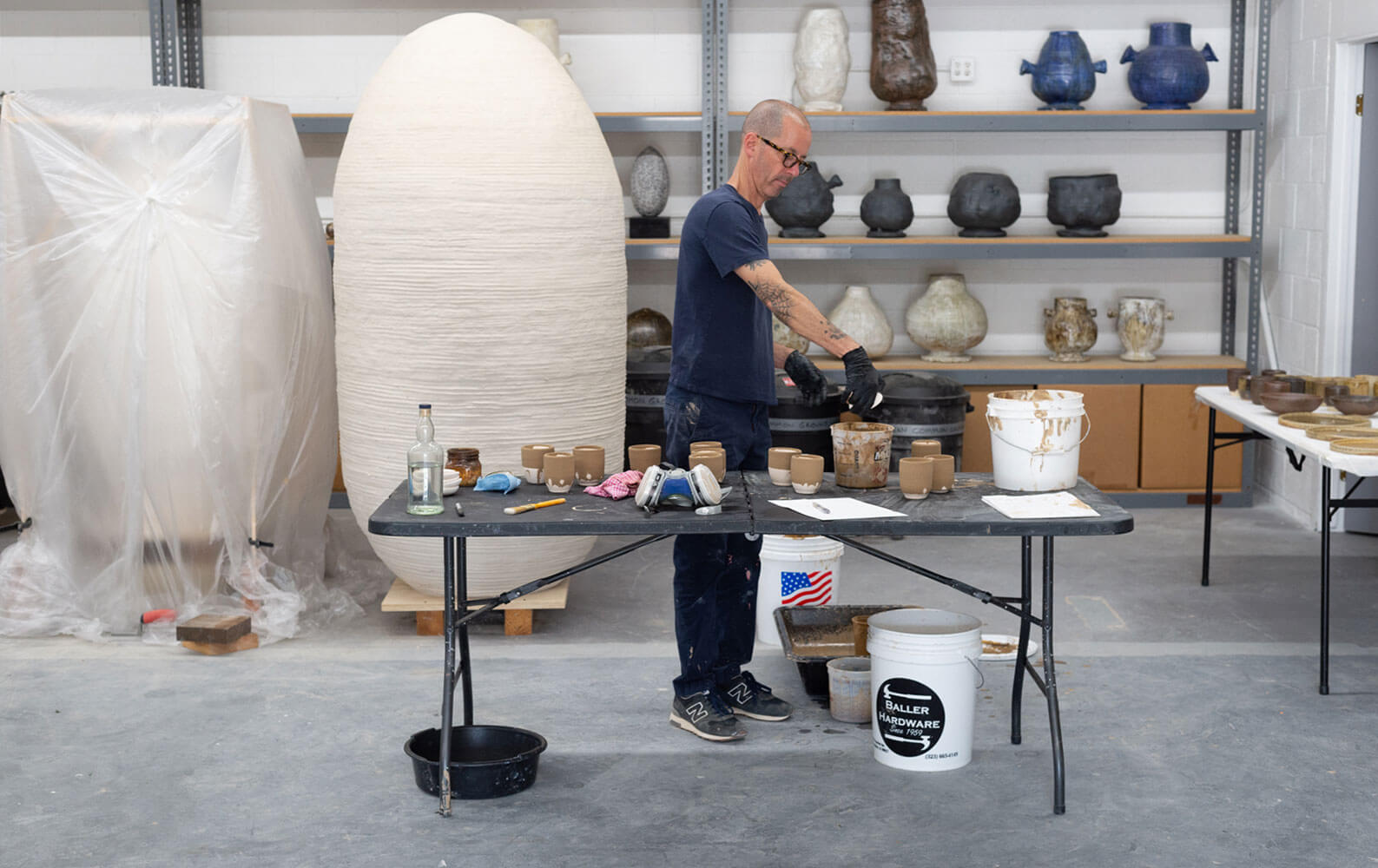
Silverman dipping elements of the ‘Common Ground’ project in glaze
COURTESY: Adam Silverman & Friedman Benda
TDE: Talk briefly about your new studio and what this new space affords your practice.
AS: Since I started doing ceramics full time in 2002, I’ve had probably four different studios here in Los Angeles. They’ve mostly been indoors, which means I’ve only been able to work with electric kilns. A few years ago, I began experimenting with a friend’s gas and wood ash kiln in Malibu but found myself transporting large pieces of work across town. He eventually realised that he wasn’t using it and let me take it off his hands. I disassembled it and reassembled it in a parking lot that I’d rented from friends.
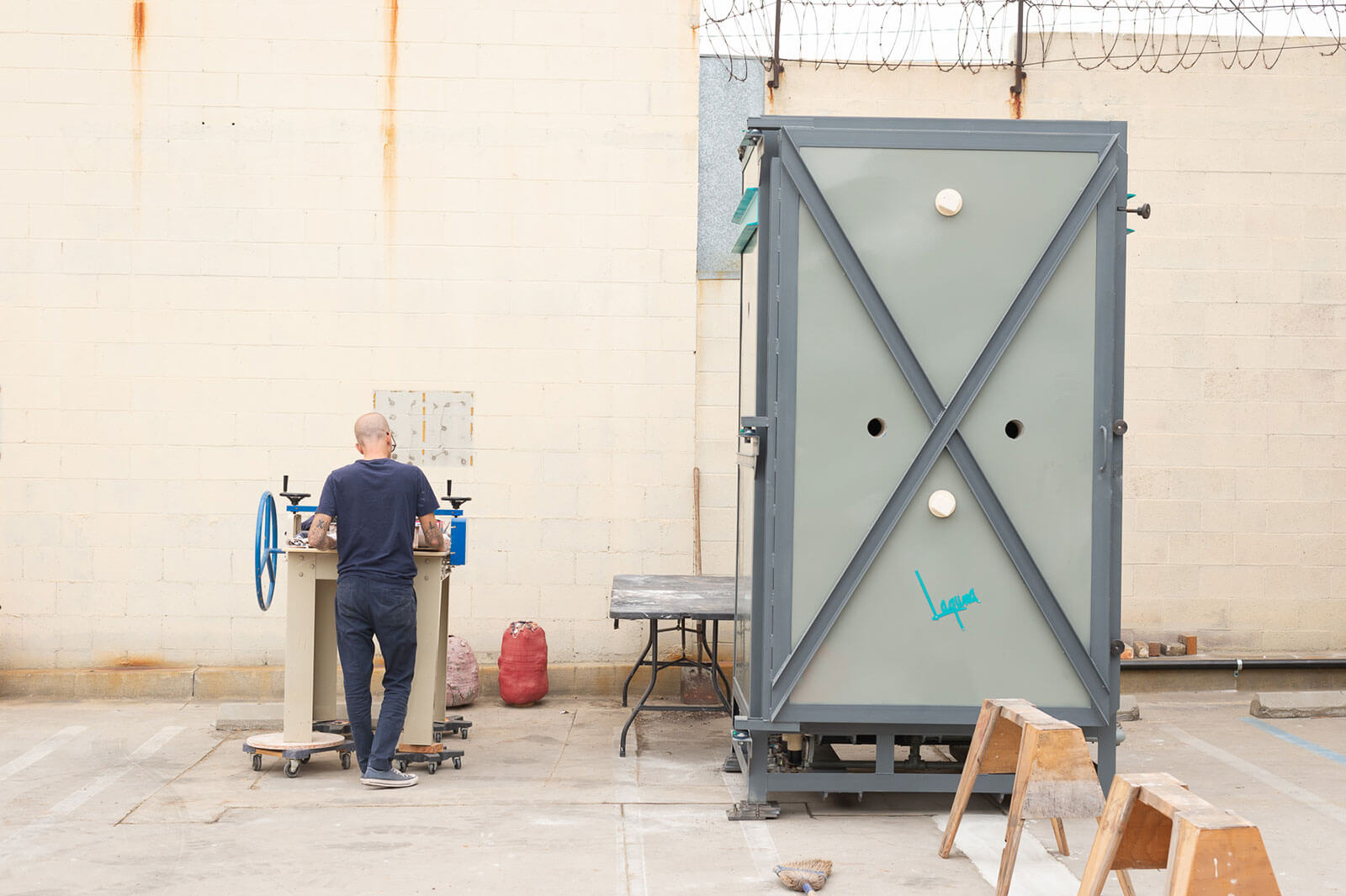
Extra large kilns are located outdoors in an adjacent parking lot
COURTESY: Adam Silverman & Friedman Benda
I still had to move things around but was finally able to rent the entire industrial building adjacent to that parking spot and have moved in. Because of this, I was able to move all my kilns outdoors, make even larger works and create a lot of noise and smoke. No one’s complained yet.
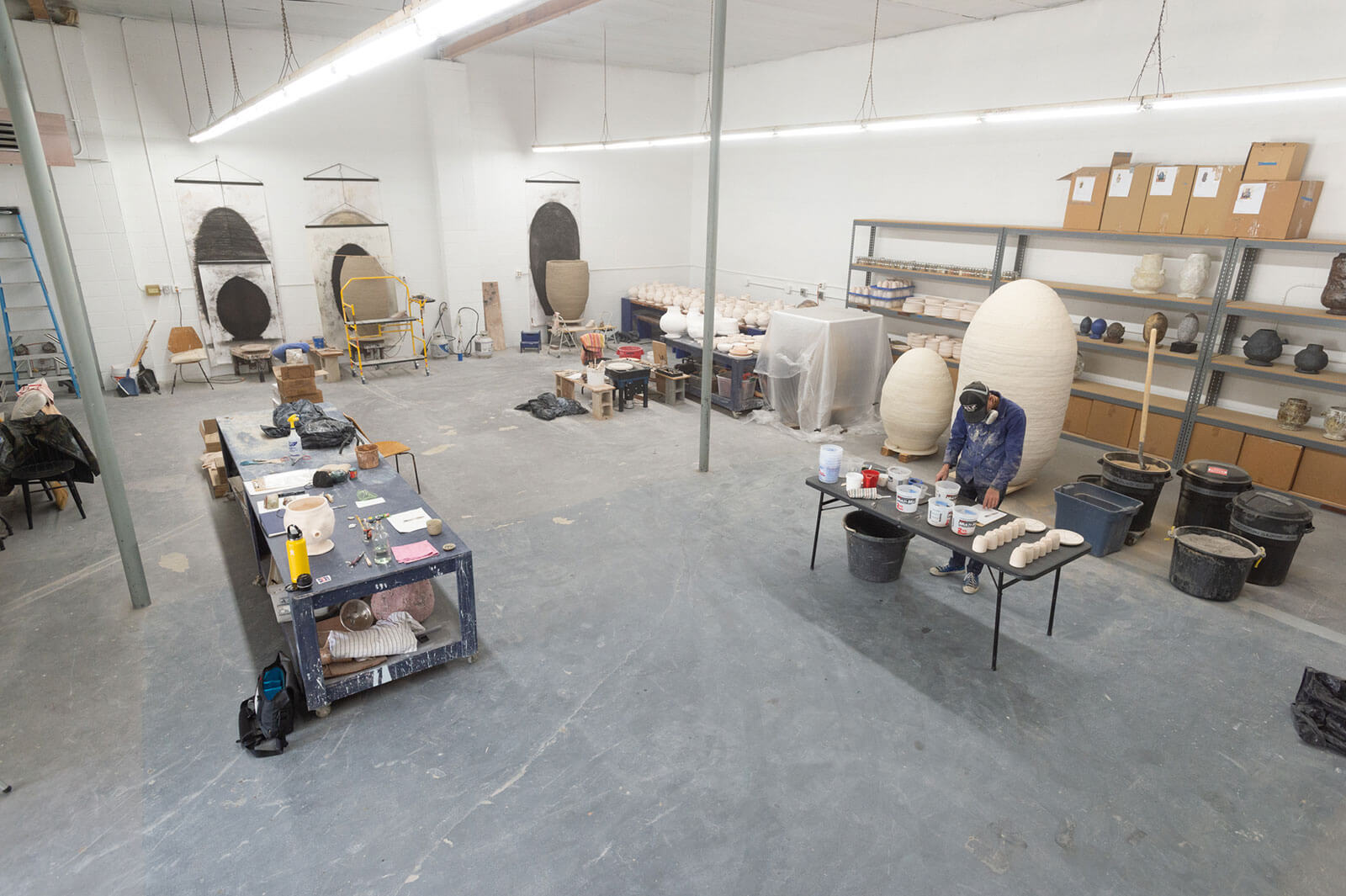
Silverman’s new studio
COURTESY: Adam Silverman & Friedman Benda
